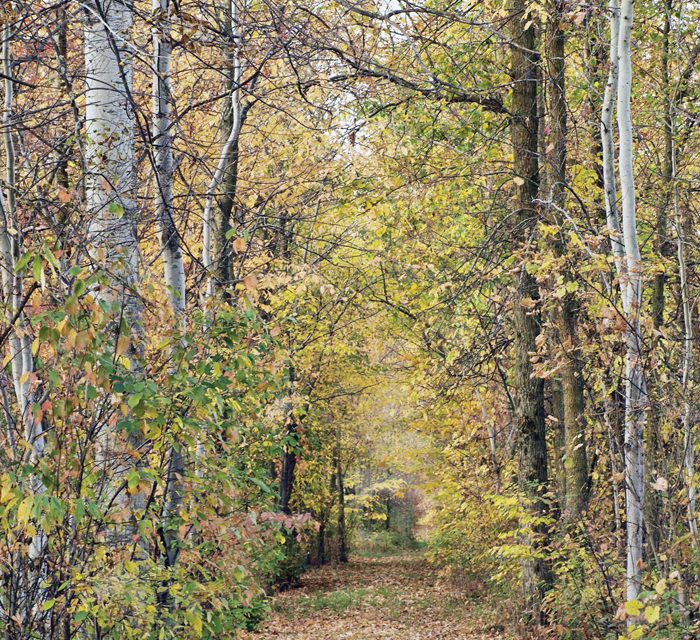Candice Vetter
Villager Staff
RUSSELL—A proposal to use grant money to pave the western end of Russell Township’s portion of the former New York Grand Central railway line, which is now a fitness trail, met with stiff opposition at the Russell Township Council meeting on Mon., March 20.
A $30,000 federal grant, which the township must match, was slated to be used to pave the portion of the trail west of Russell to Boundary Rd. in order to facilitate bicycle use. The part of the trail which goes through Russell and Embrun villages is already paved. However, users of the trail’s western end, including Heidi Kornherr who has a riding stable beside the trail at Forced Rd., were upset by the proposal, pointing out that an unpaved portion of the trail serves different users. Upon hearing of the plan Kornherr rallied neighbours and in a very short time had 260 signatures on a petition to keep the trail unpaved. About 50 supporters attended the council meeting, with 18 persons asking questions.
In its current condition the trail is well used by walkers, joggers, dog walkers, cross-country skiers, and horseback riders. “It’s a nature trail versus a recreation trail,” Kornherr said in a telephone interview. “It’s a slower pace on the natural part of the trail, and there aren’t such fast bicyclists racing by. The user group here is diverse—different than at the paved end.”
Why is the township considering paving that end in the first place? Because higher levels of government see bicycle trails as a healthy way to improve transit. But that would reduce the use by some persons, who aren’t comfortable or aren’t allowed on the paved portion, including horseback riders. Paving would also necessitate brush and tree cutting along the edge, and the removal of trees and shrubs on the trail by Hydro One has been contentious for years.
Councillors Amanda Simard and Cindy Saucier, upon hearing about residents’ concerns, changed their support for the paving and are now opposed. Other options for the grant may be considered, including paving a fast track for cyclists who want to speed, paving other spots, or laying stone dust on the trail, although the purpose of that is unclear as the current surface is springy and pleasant to travel on.
Township staff seemed surprised there was so much use of that part of the trail, and brought up the ever-present question of liability, even discussing the idea that the western end should be closed completely. That was part of why there was such a strong turnout at the council meeting—as residents who use it regularly were worried about losing access completely. It was suggested that horse riders should have $5-million in liability insurance (several times more than is carried on most cars). Kohnerr said in her case she is a member of an equestrian association which provides that insurance for her and her boarders, and most riders would be in a similar position. Cyclists, pedestrians, dog walkers and other users are not required to carry insurance.
Another sticking point seemed to be that farm machinery is driven across the trail (not down it) where farmers own the land on both sides. It seems the idea of restricting that use will lead nowhere, and it may be that the township cannot restrict crossing the trail. Also, parts of the western end of the trail had been purchased many years ago by landowners alongside it, so although there is a right-of-way, the township does not own that section. Another concern included ending the pavement at Boundary Rd., which is an 80km/h zone (on which can be seen significantly faster traffic than that) so that cyclists may pop out on a busy arterial road.
“Of everyone I talked to, which was about 280 people, only six were in favour of paving, a few didn’t care one or the other, and the rest supported leaving it natural,” Kornherr said. “Why spend that money if we don’t want it?” Her point appeared to be taken by council members and they will bring the matter up again at the April 3 meeting.











